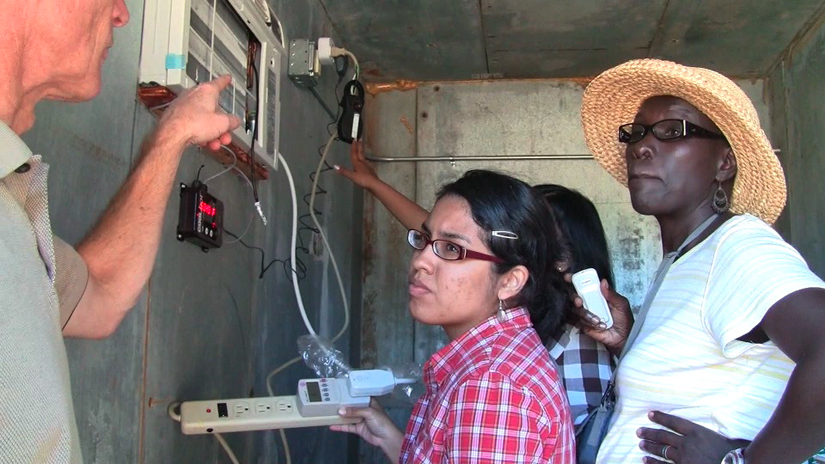
Temperature management is the key tool for reducing postharvest losses in the developing world. Very few smallholder farmers have access to cooling or cool storage facilities, and refrigerated transportation is a rarity. The unreliability of local electricity supplies, the expense of conventional coolers, and the lack of technical expertise for the installation and maintenance all have led to the search for alternative solutions such as evaporative cooling systems. Nevertheless, mechanical refrigeration still represents a simple and efficient solution to cooling produce, and is usually the only practical means for cooling to temperatures near freezing. For resource-limited farmers in the developing world, cool rooms and transportation systems employing mechanical refrigeration are economically and practically infeasible.
Led by Michael Reid of UC Davis, this international team is testing an innovative cooling device system, called the CoolBot®, which uses an intelligent thermostat system to control a standard room air conditioner to create a small-scale cooler out of a well-insulated room. Experiments include testing a range of potential insulation materials that might be used in installing or retrofitting coolrooms, evaluation of the CoolBot in combiniation with a window air conditioner, and evaluation of the use of photovoltaic panels to power the system. The team also explores options for short distance transportation, including novel insulating materials.
Project Deliverables
- CoolBot factsheet (PDF)
- Poster presented at Inception Workshop, May 2010 (PDF)
- Feasibility analysis of the CoolBot (PDF)
Report from the UC Davis D-Lab with information on stakeholder analysis, simulation scenarios, results and recommendations.
More information about the CoolBot
More information about cooling
Publications on cooling fruits and vegetables from the UC Davis Postharvest Technology Center

